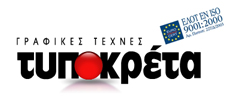Prefectures of Crete
Chania Prefecture
Municipality of ChaniaMunicipality of ApokoronasMunicipality of PlataniasMunicipality of KissamosMunicipality of Kandanos - SelinosMunicipality of GavdosMunicipality of Sfakia
Rethymnon Prefecture
Municipality of RethymnonMunicipality of MylopotamosMunicipality of AmariMunicipality of Agios VasiliosMunicipality of Anogia
Heraklion Prefecture
Municipality of HeraklionMunicipality of MaleviziMunicipality of Archanon - AsterousionMunicipality of FestosMunicipality of GortynaMunicipality of ChersonissosMunicipality of Minoa PediadosMunicipality of Viannos
Lassithi Prefecture
Municipality of MirampeloMunicipality of SitiaMunicipality of IerapetraMunicipality of Oropedio
The Museum of Monastery Preveli
Preveli Monastery, located just 37 km from Rethymnon consists of two monasteries:
The Lower Monastery (Monastery of Agios Ioannis Prodromos, or Saint John the Baptist), now abandoned, is a typical example of simple, everyday architecture.
The Rear Monastery (Monastery of Agios Ioannis Theologos) is a large group of buildings with a wonderful view over the Libyan Sea and has numerous relics which are exhibited in the monastery’s ecclesiastical museum.
Many of the rescued relics and images are displayed in the stylish museum inside the monastery. Saved a significant number of icons (about 100) from the occasional ornaments of the Catholic, the various Catholic churches and the Baptist.
The collections of the Preveli Monastery include:
A Collection of icons.
Collection of vestments.
Collection of ecclesiastical items.
Collection of relics.
The most important exhibits of the Monastery\'s Museum are:
Sigillium in membrane, about the declaration of the Monastery as patriarchical (1798.
Blessing cross of gilded silver, colourful enamel and semi-precious stones (1708.
Silver - Coated Gospel (1807).
Gospel coated with gilded silver (1847).
Gospel with silver coat (19th century).
Gilded chalice, with cover (1847).
Collection of metal seals of the 19th century).
Collection of metal brooches (19th century).
Collection of brocade vestments (19th century).
Collection of metal ecclesiastical items).



 ENGLISH
ENGLISH







